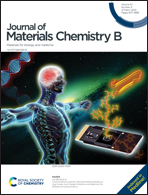Engineering Lipusu with lysophosphatidylcholine for improved tumor cellular uptake and anticancer efficacy†
Abstract
Liposomes have been developed as drug delivery carriers to enhance the antitumor efficiency of therapeutic agents. Lipusu® (Lip), a paclitaxel (PTX) liposome, has been widely used in the treatment of breast cancer. Compared with PTX, Lip could change the biodistribution and reduce the systemic toxicity. However, there was no positive effect on the entry of PTX into tumor cells, and thus the therapeutic effect was not significantly improved. Therefore, it is meaningful to engineer Lip for improving tumor cellular uptake efficiency. Here, lysophosphatidylcholine (LPC)-engineered Lip (LPC-Lip) was constructed via inserting single chain lipid tails into liposomal lipid bilayers, which was realized by simple incubation. Compared with Lip, the better cellular uptake of liposomes modified with LPC resulted in enhanced cytotoxic activity of LPC-Lip in 4T1 cells. Furthermore, stronger tumor growth inhibition was observed in LPC-Lip treated 4T1 tumor-bearing mice without significant side effects. In conclusion, by modulating the lipid composition of Lip, the antitumor efficacy can be improved, and LPC engineered Lip may serve as a promising formulation of PTX for future cancer therapy.



 Please wait while we load your content...
Please wait while we load your content...